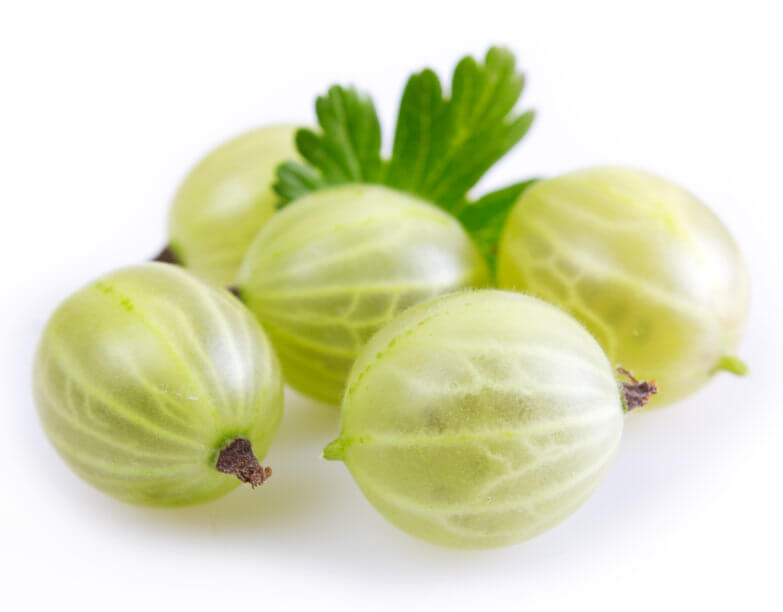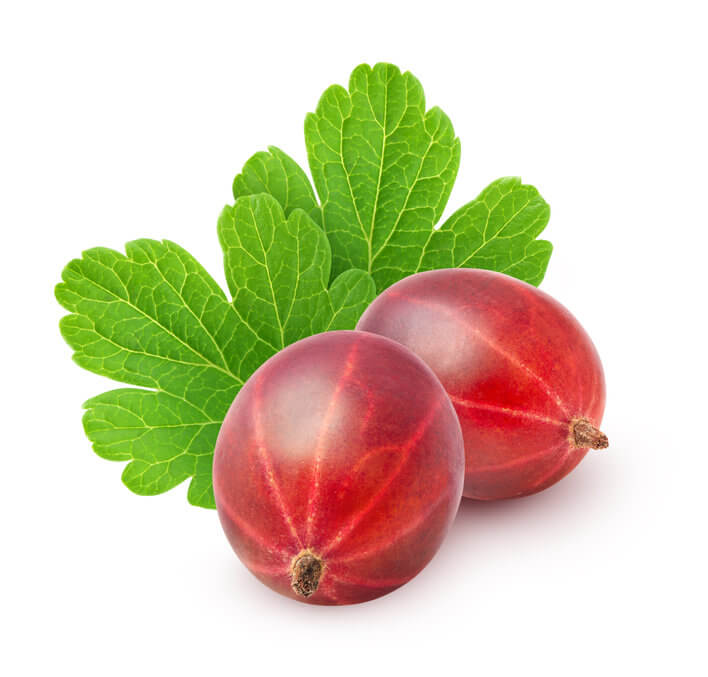The elusive gooseberry is a fruit as intriguing to the health-conscious as it is exotic. These tiny berries are traditionally grown in India and primarily consumed as health supplements in Western countries. However, there is another lesser-known variety of gooseberry — the American gooseberry — that grows in temperate regions of northern America and Canada. If you’ve ever wondered how it compares to the widely-consumed Indian gooseberry though then today you are in luck! In this article we’ll be going over all of the differences between Indian gooseberry vs American gooseberry!
In short, the primary difference between Indian gooseberry vs American gooseberry is that the Indian variety is more commercially available and widely consumed as a health supplement. American gooseberry, however, is a reddish variety that is rarely produced or consumed as its growth can be destructive to nearby white pines.
Let’s delve in further.
What Is Indian Gooseberry?
Indian gooseberry, also known as Amla, is a fruit that grows in India and other tropical regions of the world. The berries are small with a green outer skin and yellow inner flesh.

The primary characteristic of Indian gooseberry though its high concentration of vitamin C. Just a single 1-cup serving of raw Indian gooseberries contain 41.6mg of vitamin C — nearly half the daily recommended daily amount for adult men, and more than half for women, according to Mayo Clinic.
What’s more, the vitamin C in Indian gooseberry is so stable that isn’t destroyed by the heat of boiling or drying it. This makes it a popular choice among supplement manufacturers.
It’s also a popular choice for health-conscious individuals who are looking to reap the numerous benefits of consuming more vitamin C.
What Is American Gooseberry?
American gooseberry, also known as Ribes Hirtellum, is a variety of gooseberry that grows in North America, typically in more temperate regions such as Canada and the northern United States.
Much like Indian gooseberry, the berries are small, round, and similar in appearance. However, one distinct difference between Indian gooseberry vs American gooseberry is that the American variety has a red outer skin.

Growing American gooseberry plants was banned by the Federal government of the United States in 1911. The reason being that they act as a host for white pine blister rust — a disease that harms white pine trees.
White pine trees are an integral part of the timber industry, hence the ban.
In 1966 the Federal ban was lifted and the decision left to the states. Some states continued the ban while others required a permit.
Despite lifting the Federal ban, the American gooseberry has yet to experience any of the commercial success of the Indian variety of gooseberry. In fact, they are nearly impossible to find in most marketplaces.
Indian Gooseberry VS American Gooseberry
Now that we’ve done a brief description for each, let’s see how these two varieties of gooseberry compare to each other.
Commercial Availability
One of the biggest differences between Indian gooseberry vs American gooseberry is the commercial availability.
Indian gooseberry, although relatively obscure in most Western marketplaces, isn’t too difficult to find. In fact, you can sometimes find in its whole food form at your local Trader Joe’s.
Additionally, it can be located in supplement form in various health food stores, as well as online marketplaces such as Amazon.
American gooseberry, on the other hand, is nearly impossible to find. In fact, in doing research for this article we were unable to find a single American gooseberry-based product for sale — online or offline.
The only commercial availability we could find is the seeds to growth them yourself.
This likely due to the fact that American gooseberry has yet to be commodified and marketed to the public. It may also have to do with the Federal ban on their cultivation that lasted for roughly half a century.
To consume American gooseberries, you would likely need to locate them in the wild or grow them yourself.
How They’re Consumed
Another difference between Indian and American gooseberry varieties is how they’re consumed.
Indian gooseberry is quite a versatile fruit. They can be eaten in their raw, whole form, dried like raisins, or ground to a fine powder that can be used in health supplement products.
Indian gooseberry can be used in a variety of ways, including:
- As capsules in supplement form
- As a dried fruit to snack on
- Used as a spread for toast and sandwiches when made into preserves
- As a dried and ground powder that can be mixed into beverages
- Ground and mixed in water for use as a natural mouthwash that may suppress bacteria growth that causes cavities
- As an oil for use in hair products
- And more
American gooseberry, on the other hand, has far less uses, likely due to its lack of commercial viability. According to “The Growing Place” website, uses include:
- Eaten fresh
- Used in baking recipes
- Made into preserves
Potential Health Benefits
Let’s go over some of the potential health and nutritional benefits of Indian and America gooseberry.
According to WebMD, the Indian gooseberry is classified as “potentially useful” for lowering cholesterol.
A 2012 comparative clinical study published to the PubMed website found that amla may reduce cholesterol.
Another potential use for gooseberry is relief from heartburn. A 2018 randomized control trial published to the PubMed website concluded that amla can help with heartburn relief.
It’s important to note that these benefits pertain to the Indian variety of gooseberry. The medical literature on the benefits of American gooseberry is comparatively scarce, but seeing as how similar the two varieties are, one would assume that some of these benefits may carry over.
The Bottom Line
Overall, the differences between Indian gooseberry vs American gooseberry may be outweighed by their similarities. But despite that, there are also some key differences between the two.
From how they’re consumed to their potential health benefits, Indian and American gooseberry seem to be quite different in many respects. Either way, both varieties offer some interesting insights into the world of plant-based nutrition.

